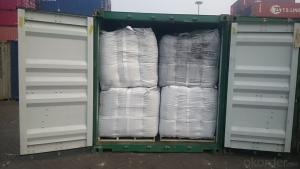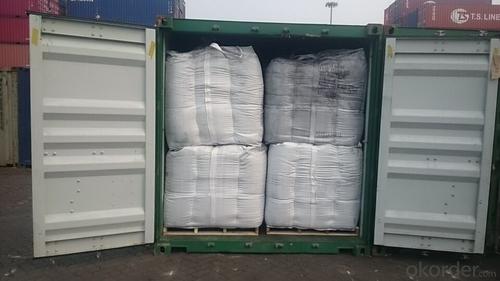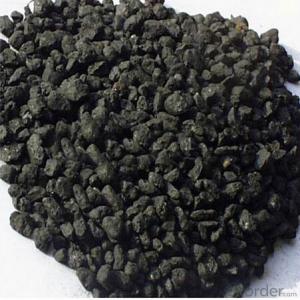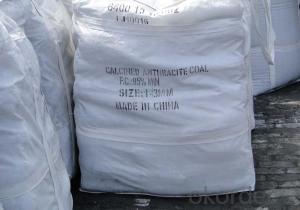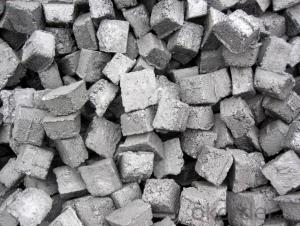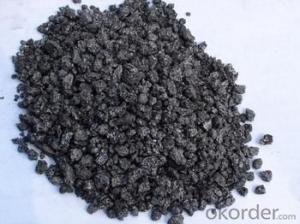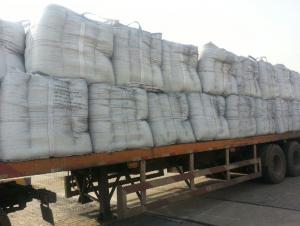Used in EAF as Injection Carbon for Steel Mills
- Loading Port:
- Tianjin
- Payment Terms:
- TT OR LC
- Min Order Qty:
- 21 m.t.
- Supply Capability:
- 6000 m.t./month
OKorder Service Pledge
OKorder Financial Service
You Might Also Like
Introduction:
Calcined anthracite can be called carbon additive, carbon raiser, recarburizer, injection coke, charging coke, gas calcined anthracite.
Carbon Additive/Calcined Anthracite Coal may substitute massively refinery coke or graphite. Meanwhile its cost is much less than the refinery coke and graphite. Carbon Additive is mainly used in electric steel ovens, water filtering, rust removal in shipbuilding and production of carbon material.
It has good characteristics with low ash, low resistivity, low sulphur, high carbon and high density. It is the best material for high quality carbon products. It is used as carbon additive in steel industry or fuel.
Features:
Best quality Taixi anthracite as raw materials through high temperature calcined at 800-1200 ℃ by the DC electric calciner with results in eliminating the moisture and volatile matter from Anthracite efficiently, improving the density and the electric conductivity and strengthening the mechanical strength and anti-oxidation, It has good characteristics with low ash, low resistivity, low carbon and high density. It is the best material for high quality carbon products, it is used as carbon additive in steel industry or fuel.
Specifications:
F.C.% | 95MIN | 94MIN | 93MIN | 92MIN | 90MIN | 85MIN | 84MIN |
ASH % | 4MAX | 5MAX | 6 MAX | 6.5MAX | 8.5MAX | 12MAX | 13MAX |
V.M.% | 1 MAX | 1MAX | 1.0MAX | 1.5MAX | 1.5MAX | 3 MAX | 3 MAX |
SULFUR % | 0.3MAX | 0.3MAX | 0.3MAX | 0.35MAX | 0.35MAX | 0.5MAX | 0.5MAX |
MOISTURE % | 0.5MAX | 0.5MAX | 0.5MAX | 0.5MAX | 0.5MAX | 1MAX | 1MAX |
Pictures
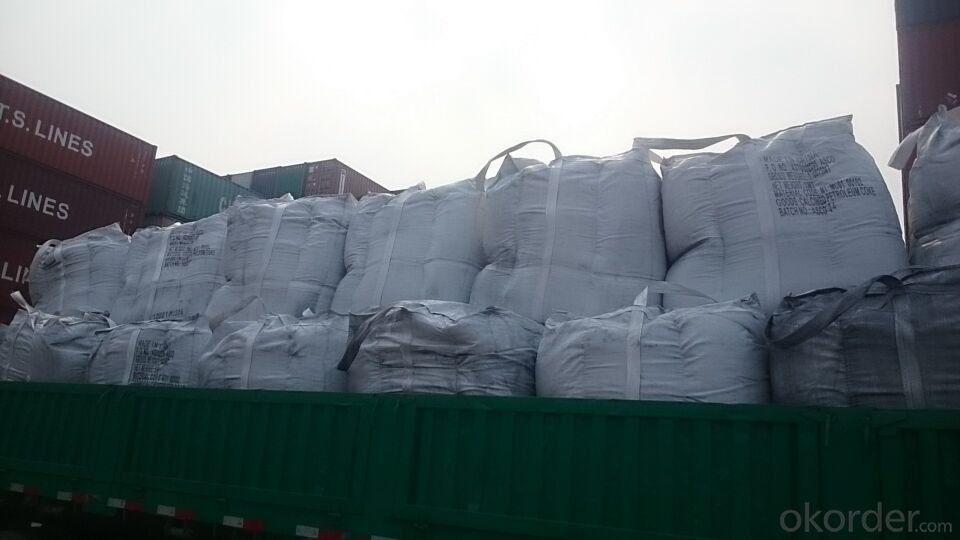
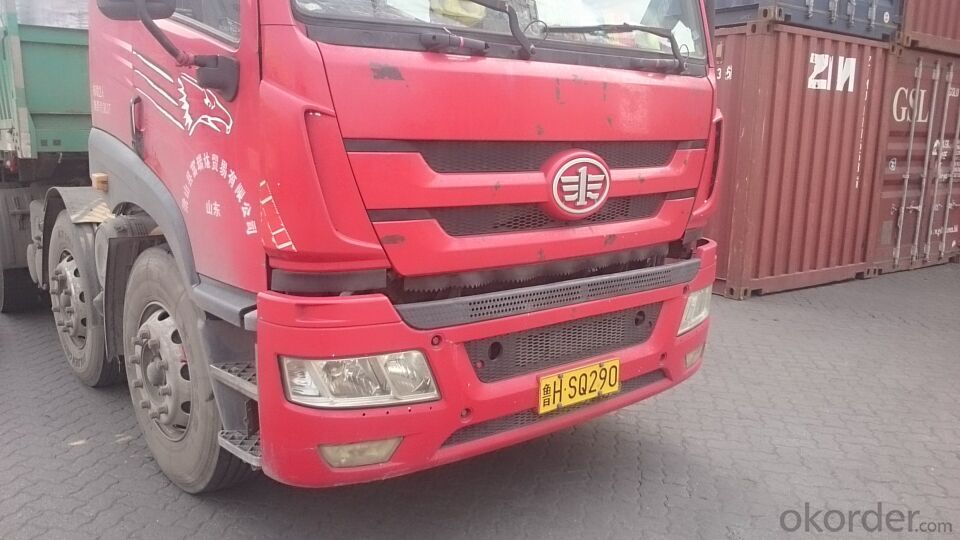
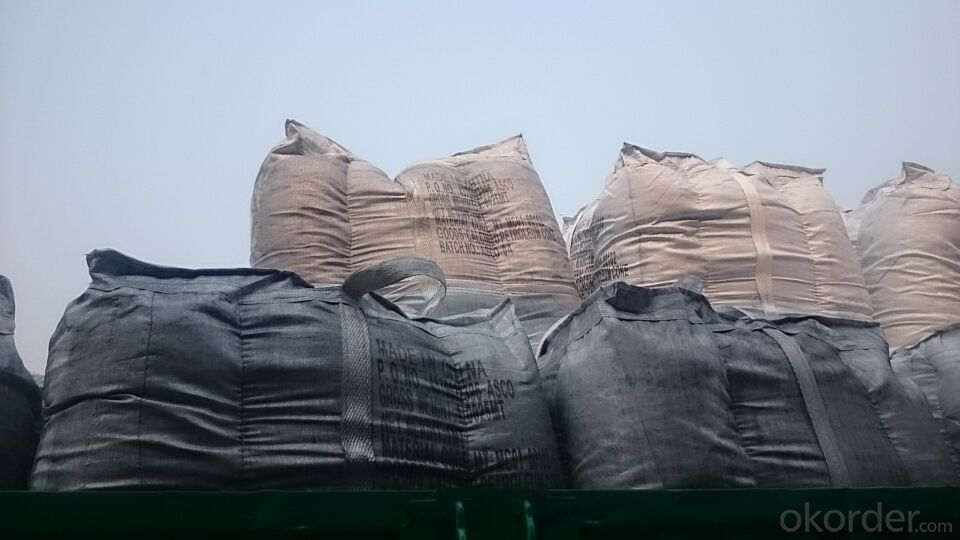
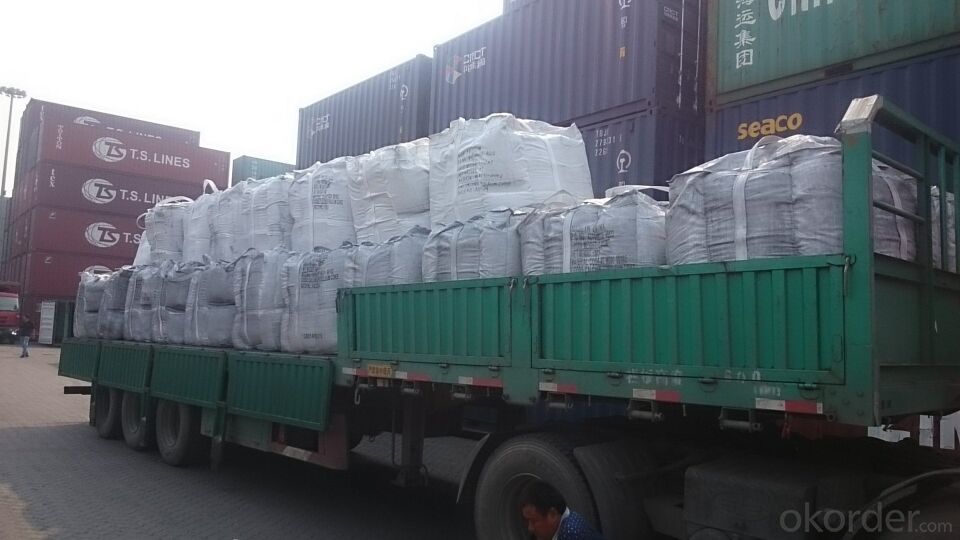
FAQ:
Packing:
(1). Waterproof jumbo bags: 800kgs~1100kgs/ bag according to different grain sizes;
(2). Waterproof PP woven bags / Paper bags: 5kg / 7.5kg / 12.5kg / 20kg / 25kg / 30kg / 50kg small bags;
(3). Small bags into jumbo bags: waterproof PP woven bags / paper bags in 800kg ~1100kg jumbo bags.
Payment terms
20% down payment and 80% against copy of B/L.
Workable LC at sight,
- Q: What are the impacts of carbon emissions on the stability of rainforests?
- Carbon emissions have significant impacts on the stability of rainforests. Increased levels of carbon dioxide in the atmosphere due to emissions contribute to global warming, leading to changes in rainfall patterns and increased temperatures. These changes can negatively affect the delicate balance of rainforest ecosystems, causing droughts, wildfires, and loss of biodiversity. Additionally, carbon emissions contribute to the acidification of oceans, which can harm marine life that rainforests depend on, such as coral reefs. Overall, carbon emissions pose a serious threat to the stability and long-term survival of rainforests.
- Q: How is carbon used in the production of solar cells?
- Solar cells do not directly utilize carbon in their production. Instead, semiconductor materials like silicon or cadmium telluride are typically used to create solar cells. Nevertheless, carbon-based materials can greatly enhance the efficiency and effectiveness of solar cells. Carbon, in the form of carbon nanotubes, can be employed as a see-through electrode within solar cells. Carbon nanotubes possess exceptional electrical conductivity and optical transparency, making them an ideal substitute for conventional transparent conductive materials such as indium tin oxide. Moreover, carbon-based materials can serve as a protective coating or encapsulation layer, safeguarding solar cells against moisture, corrosion, and mechanical strain. Carbon-based materials also have the potential to revolutionize solar cell technology by contributing to the development of cutting-edge solar cell types such as organic solar cells or perovskite solar cells. These advanced solar cells utilize carbon-based compounds in their active layers. In summary, although carbon is not directly involved in the production of solar cells, it plays a critical role in enhancing their performance and enabling the progress of more sophisticated solar cell technologies.
- Q: How does carbon impact the ozone layer?
- The ozone layer is not directly affected by carbon, but carbon-containing compounds such as CFCs can greatly impact it. When CFCs are released into the atmosphere, they can reach the stratosphere and break down due to UV radiation, releasing chlorine atoms. These chlorine atoms then destroy ozone molecules catalytically, causing the depletion of the ozone layer. The depletion of the ozone layer is a crucial environmental concern because it allows more harmful UV radiation from the sun to reach the Earth's surface. Increased UV radiation can have negative effects on human health, including skin cancer, cataracts, and weakened immune systems. It can also harm ecosystems by damaging phytoplankton, which are vital to the marine food chain, and affecting the growth of plants and crops. To address this issue, the international community has taken measures to decrease the production and usage of substances that deplete the ozone layer, including CFCs. The Montreal Protocol, an international environmental agreement, has successfully phased out the production of CFCs and other harmful substances. This has contributed to the recovery of the ozone layer, although it remains a long-term process. In conclusion, carbon itself does not directly impact the ozone layer. However, carbon-containing compounds like CFCs, when released into the atmosphere, can cause the destruction of the ozone layer. Efforts to reduce the production and usage of these substances that deplete the ozone layer have been essential in safeguarding the ozone layer and mitigating the harmful effects of increased UV radiation.
- Q: What are the effects of carbon emissions on the Arctic ecosystem?
- Carbon emissions have significant effects on the Arctic ecosystem. The increased levels of carbon dioxide in the atmosphere contribute to global warming, causing the Arctic to warm at a faster rate than the rest of the world. This leads to the melting of sea ice, loss of permafrost, and rising sea levels. These changes disrupt the delicate balance of the Arctic ecosystem, affecting various species, including polar bears, walruses, and seals, as well as their prey. Additionally, the acidification of the oceans due to carbon emissions further impacts marine life, such as plankton and shellfish. Overall, carbon emissions have detrimental consequences for the Arctic ecosystem, threatening its biodiversity and functioning.
- Q: What are the impacts of carbon emissions on the stability of river ecosystems?
- Carbon emissions have significant impacts on the stability of river ecosystems. One of the primary consequences of carbon emissions is the increase in greenhouse gases in the atmosphere, leading to global warming. Rising temperatures have direct and indirect effects on river ecosystems. Firstly, increased temperatures can alter the physical characteristics of rivers and affect the availability of oxygen in the water. Warmer water holds less dissolved oxygen, which can harm aquatic organisms such as fish and invertebrates that rely on oxygen for survival. This decrease in oxygen levels can lead to reduced biodiversity and even fish kills. Secondly, climate change, driven by carbon emissions, can disrupt the natural hydrological cycle. Changes in precipitation patterns can result in droughts or floods, causing fluctuations in river flow. These changes can affect the spawning and migration patterns of many aquatic species, disrupting their life cycles and reducing their populations. Furthermore, altered river flows can also impact the stability of riverbank and riparian habitats, leading to erosion and habitat loss. Additionally, increased carbon emissions contribute to ocean acidification. When carbon dioxide is absorbed by water, it forms carbonic acid, which lowers the pH of the water. Acidic waters can have detrimental effects on aquatic life, including shellfish, corals, and other calcifying organisms. River ecosystems are interconnected with coastal and marine ecosystems, so the impacts of ocean acidification can indirectly affect river ecosystems through the food web. Moreover, carbon emissions contribute to the deposition of air pollutants, such as nitrogen and sulfur compounds, onto land and water bodies. These pollutants can be transported by rainfall into rivers, leading to increased nutrient levels and eutrophication. Excessive nutrients can cause harmful algal blooms, deplete oxygen levels, and create dead zones, further disrupting the balance of river ecosystems. In conclusion, carbon emissions have profound impacts on the stability of river ecosystems. Rising temperatures, altered hydrological cycles, ocean acidification, and increased nutrient levels all contribute to the degradation of these ecosystems. It is crucial to reduce carbon emissions and implement sustainable practices to mitigate these impacts and preserve the health and stability of river ecosystems.
- Q: How does carbon dioxide affect ocean acidity?
- Ocean acidification, a process caused by the presence of carbon dioxide, is responsible for the increased acidity in the ocean. Human activities, such as the burning of fossil fuels, release carbon dioxide into the atmosphere, and a significant portion of it is absorbed by the oceans. This excess carbon dioxide reacts with seawater and forms carbonic acid, which then dissociates into hydrogen ions and bicarbonate ions. The rise in hydrogen ions reduces the ocean's pH level, resulting in increased acidity. The elevated acidity of the ocean negatively impacts marine life in several ways. Marine organisms, including corals, shellfish, and plankton, are unable to construct and maintain their calcium carbonate structures, such as shells and exoskeletons, due to this condition. This can lead to slower growth rates, weakened structures, and higher mortality rates among these organisms. The survival and reproduction of various species, including fish and other marine animals, are also affected by ocean acidification. The changes in water chemistry disrupt their physiological processes, making it difficult for them to navigate, find food, and evade predators. Moreover, the increased acidity can alter the behavior and development of certain species, potentially causing changes in ecosystems and a decline in biodiversity. Ocean acidification can also have a cascading effect on the entire marine food web. Phytoplankton and other primary producers, which are the foundation of the food chain, may suffer due to the changing ocean chemistry. Consequently, the organisms that rely on them for sustenance are also impacted. This disruption can have far-reaching consequences for the entire ecosystem, including commercially valuable fish species and the livelihoods of coastal communities that depend on them. In conclusion, the emissions of carbon dioxide contribute to ocean acidification, which has severe consequences for marine life and ecosystems. It is crucial to comprehend and address this issue in order to safeguard the health and sustainability of our oceans and the countless species that depend on them.
- Q: What are the effects of carbon emissions on the stability of grasslands?
- Carbon emissions have a significant impact on the stability of grasslands. One of the main effects is the alteration of the climate, specifically through the greenhouse effect. Carbon dioxide (CO2) is a major greenhouse gas, and the increased concentration of CO2 in the atmosphere leads to global warming. This rise in temperature affects grasslands by altering their natural growth patterns and disrupting the delicate balance of their ecosystems. Higher temperatures caused by carbon emissions can lead to increased evaporation rates, resulting in drier soil conditions. Grasslands are adapted to specific moisture levels, and any changes in these conditions can lead to reduced plant growth and increased susceptibility to drought. As a consequence, grasslands become less stable and more prone to desertification. Moreover, elevated levels of carbon dioxide can affect the nutritional quality of grasses. As CO2 concentrations increase, the relative proportion of essential nutrients in grasses may decrease. This phenomenon, known as nutrient dilution, can impact the health and productivity of herbivores that rely on these grasslands for sustenance. The decline in nutritional value can disrupt the delicate balance of predator-prey relationships and lead to a decline in biodiversity. Additionally, carbon emissions contribute to the acidification of soils. Increased carbon dioxide dissolves in rainwater, forming carbonic acid, which lowers the pH of the soil. Grasses are sensitive to changes in soil pH, and acidification can negatively affect their growth and nutrient uptake. Acidic soil conditions can also lead to the loss of important microorganisms that contribute to a healthy soil ecosystem, further destabilizing grasslands. Lastly, carbon emissions have indirect effects on grasslands through climate change-induced alterations in precipitation patterns. Changes in rainfall patterns can lead to shifts in plant composition and distribution, favoring invasive species or altering the competitive balance between different grass species. This can disrupt the stability and functioning of grassland ecosystems. In conclusion, carbon emissions have numerous detrimental effects on the stability of grasslands. These include changes in climate, increased vulnerability to drought, nutrient dilution, soil acidification, and alterations in precipitation patterns. It is crucial to reduce carbon emissions and mitigate the impacts of climate change to preserve the stability and integrity of grassland ecosystems.
- Q: What are the main sources of carbon emissions?
- The main sources of carbon emissions include burning fossil fuels such as coal, oil, and natural gas for electricity, transportation, and industrial processes. Deforestation and land-use changes also contribute to carbon emissions by releasing stored carbon into the atmosphere.
- Q: What are the effects of carbon emissions on freshwater systems?
- Freshwater systems are significantly affected by carbon emissions, with one major consequence being the acidification of water bodies. When carbon dioxide dissolves in water, it creates carbonic acid, resulting in a decrease in pH levels. This acidification negatively impacts freshwater organisms like fish, amphibians, and invertebrates, as it disrupts their physiological processes and can even lead to their death. Furthermore, carbon emissions contribute to global warming, which in turn has an impact on freshwater systems. Rising temperatures can lead to increased evaporation, causing water scarcity in specific regions. This scarcity has severe implications for both human populations and ecosystems that rely on freshwater resources. Additionally, the warming of freshwater systems can disturb the balance of the ecosystem by promoting the growth of harmful algae blooms. These blooms thrive on excess nutrients, such as nitrogen and phosphorus, which are often present in runoff from agricultural and urban areas. The combination of higher temperatures and nutrient enrichment can result in the proliferation of harmful algae, which produce toxins that are harmful to aquatic life and human health. Moreover, carbon emissions indirectly affect freshwater systems through their contribution to climate change. As global temperatures rise, glaciers and polar ice caps melt, leading to an influx of freshwater into the system. This sudden increase in freshwater disrupts the delicate balance between saltwater and freshwater ecosystems, affecting the distribution and migration patterns of various species. It also alters salinity levels, impacting the survival and reproduction of marine organisms. In conclusion, carbon emissions have various negative effects on freshwater systems, including acidification, water scarcity, the proliferation of harmful algae blooms, and disruptions to the delicate balance between saltwater and freshwater ecosystems. It is crucial to reduce carbon emissions and mitigate the impacts of climate change to protect the health and sustainability of freshwater systems.
- Q: How does carbon impact the availability of renewable energy sources?
- Carbon impacts the availability of renewable energy sources in a number of ways. Firstly, carbon emissions from the burning of fossil fuels contribute to climate change, which is a significant threat to the availability and sustainability of renewable energy sources. The increased frequency and intensity of extreme weather events caused by climate change can damage renewable energy infrastructure, such as wind turbines and solar panels. Secondly, carbon-intensive industries, such as coal mining and oil extraction, can limit the growth and development of renewable energy technologies. These industries have historically received substantial subsidies and support from governments, which can hinder the progress of renewable energy by diverting resources and investment away from cleaner alternatives. Furthermore, carbon emissions contribute to air pollution, which can have negative impacts on the efficiency and performance of renewable energy systems. For example, air pollution can reduce the amount of sunlight reaching solar panels or obstruct wind flow to turbines, thereby decreasing their energy output. Additionally, the reliance on carbon-based energy sources creates a significant market competition for renewable energy. Fossil fuels often have lower costs due to their established infrastructure and economies of scale, making it challenging for renewable energy sources to compete on a cost basis. This can limit the availability and accessibility of renewable energy options, particularly in developing countries where fossil fuels are often the cheaper and more readily available option. To address these challenges, it is crucial to reduce carbon emissions through transitioning to renewable energy sources and implementing policies that incentivize their adoption. By reducing carbon emissions, we can mitigate the impacts of climate change on renewable energy infrastructure and create a more conducive environment for the development and deployment of clean energy technologies.
Send your message to us
Used in EAF as Injection Carbon for Steel Mills
- Loading Port:
- Tianjin
- Payment Terms:
- TT OR LC
- Min Order Qty:
- 21 m.t.
- Supply Capability:
- 6000 m.t./month
OKorder Service Pledge
OKorder Financial Service
Similar products
Hot products
Hot Searches
